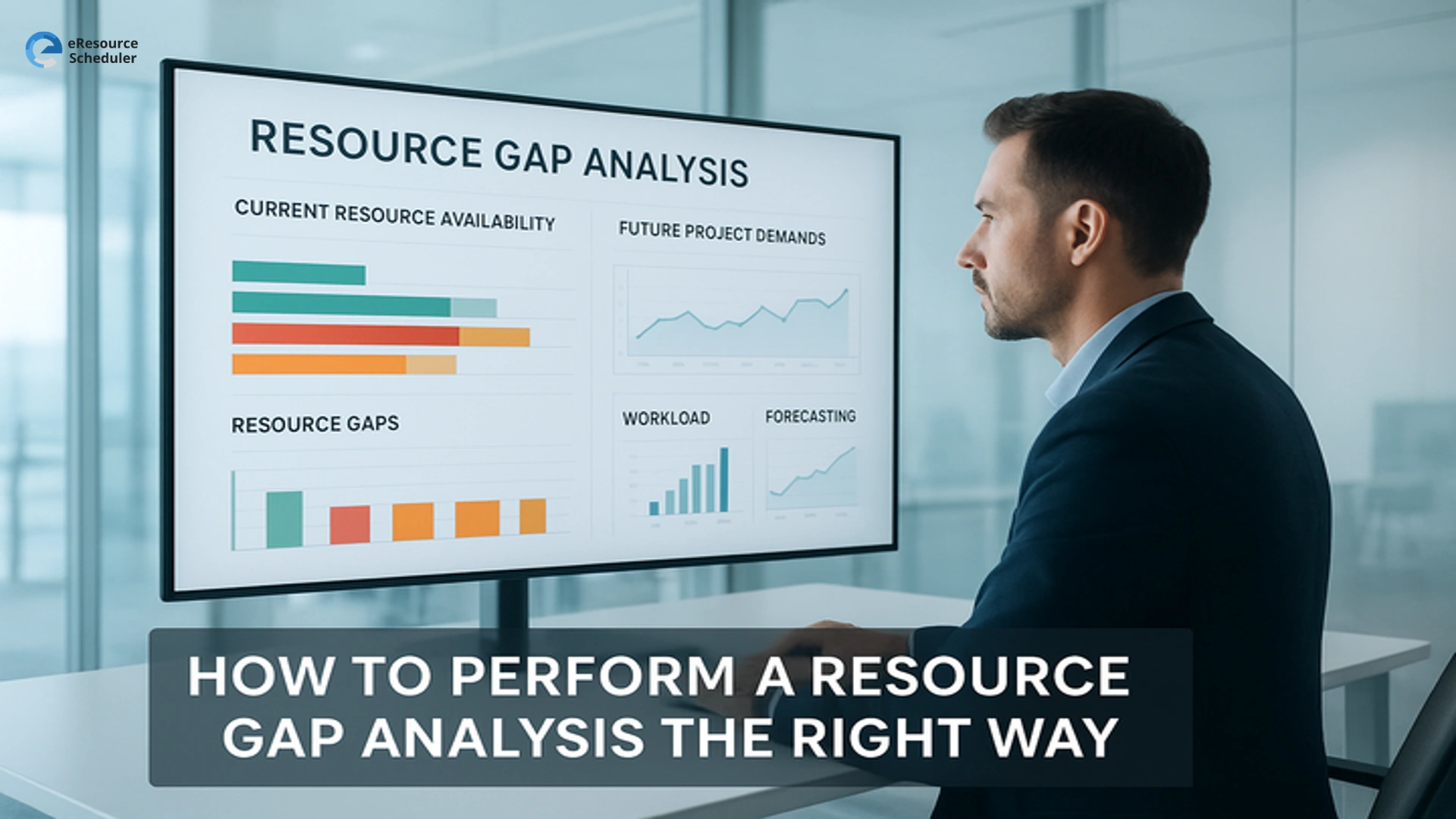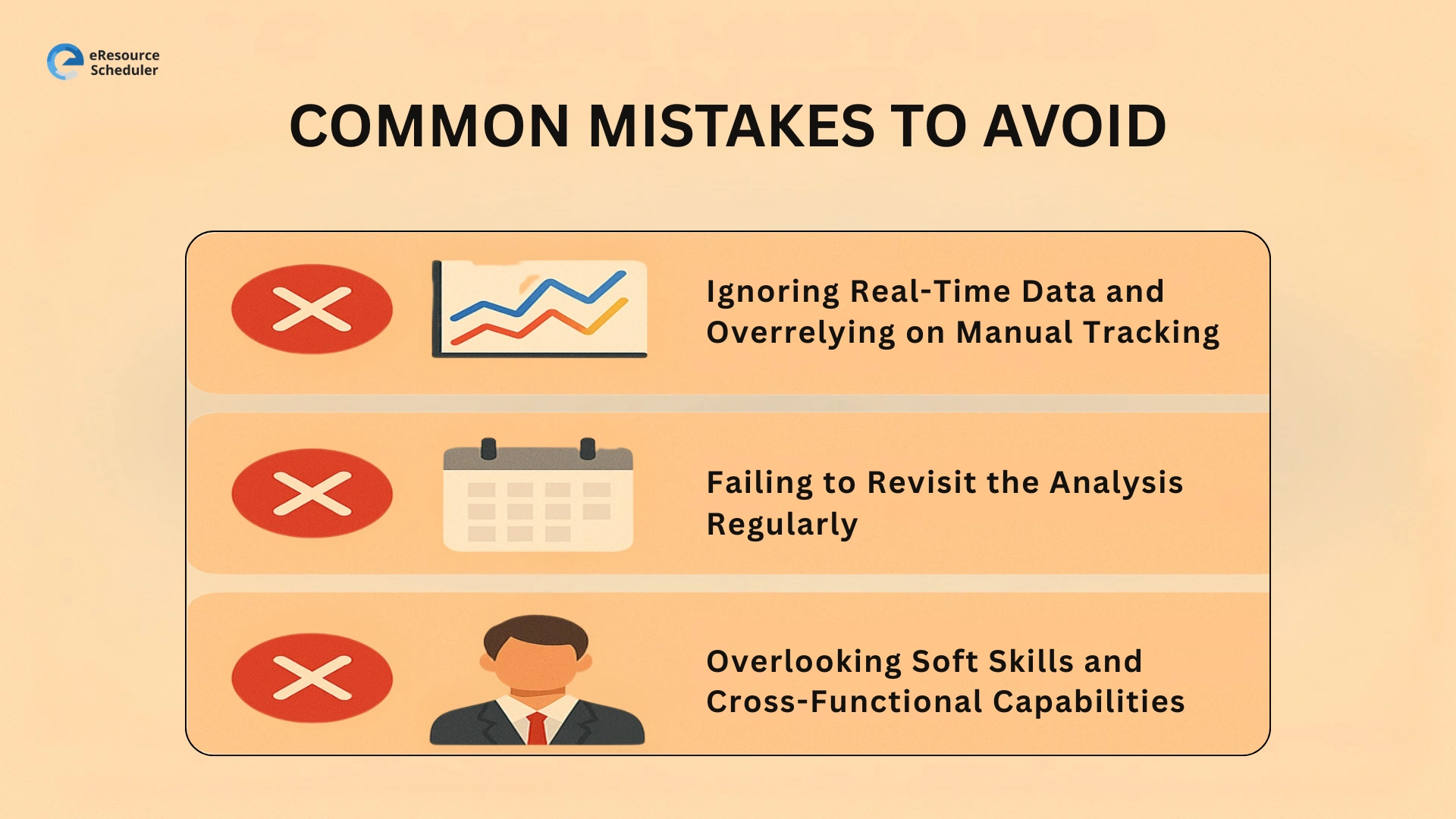
The modern workplace operates at a pace where teams can’t afford uncertainty. Projects move fast, client expectations shift overnight, and hybrid models continue to redefine how work gets done. In this environment, success depends not just on having resources but on knowing exactly where your strengths lie — and where the gaps are hiding.
That’s where resource planning software becomes indispensable. It gives leaders the visibility to perform a precise resource gap analysis, revealing the difference between the resources you have and the ones you’ll need to meet future goals. For project managers and operations heads, this isn’t just a checklist activity, it’s a strategic exercise that ensures every role, skill, and capacity aligns with business priorities.
In 2026, as organizations embrace automation, flexible talent models, and cross-functional collaboration, the ability to perform an accurate resource gap analysis will separate reactive teams from proactive ones. It’s no longer about filling vacancies, it’s about building resilience, agility, and long-term capability.
A resource gap analysis compares the workforce and tools an organization currently has with what it needs to achieve future goals. It goes beyond headcount, examining skills, time, and capability.
By mapping existing strengths against upcoming demands, managers can pinpoint where additional training, hiring, or redistribution is required. The result is a roadmap that transforms resource planning from reactive to strategic.
The workplace has evolved faster than many planning processes. Teams are distributed, skills are shifting, and new technologies demand constant learning. A 2025 Deloitte study found that over half of U.S. companies face shortages in digital or analytical roles.
A structured resource capacity planning approach ensures those challenges are addressed before they impact delivery. Regular analysis helps teams balance workloads, prevent burnout, and align capabilities with business direction.
A clear purpose keeps the process relevant and actionable.
Early detection is the biggest advantage of a resource gap analysis. By identifying where expertise or bandwidth is missing, leaders can act before it disrupts timelines. This proactive insight strengthens resource scheduling and ensures projects always have the support they need.
A gap analysis bridges operational planning with long-term objectives. It clarifies whether the workforce structure supports expansion, innovation, or client delivery goals. This connection helps leaders make investment and training decisions that serve larger business outcomes.
When decisions are based on data rather than assumptions, projects run more smoothly. A consistent analysis cycle highlights utilization trends, availability issues, and recurring shortages. That information improves forecasting accuracy and drives realistic project commitments.
Start by clarifying what success looks like. Define business objectives, project timelines, and expected outcomes. These serve as the foundation for every later decision.
Evaluate your existing workforce, skill sets, and workloads. Use data from previous projects and time reports to identify strengths and constraints. This assessment supports more accurate resource capacity planning and ensures that any future decisions are based on facts.
Compare current capacity with future demand to uncover shortages.
A skill gap means missing knowledge or expertise. A capacity gap means qualified people exist but lack available time. The first calls for training or recruitment, while the second requires smarter resource scheduling and workload balancing.
Rank gaps by their influence on performance or delivery. Addressing the most critical issues first ensures maximum efficiency and faster improvement.
Develop an actionable plan with measurable outcomes. Whether it involves hiring, upskilling, or reallocating roles, each step should have clear ownership and timelines. Regular reviews maintain progress and adaptability.
Digital tools now make resource gap analysis faster, more accurate, and more reliable.
Modern resource planning software brings all relevant data together project timelines, utilization reports, and skills information, into one place. It helps leaders visualize workloads, forecast demand, and make data-driven staffing decisions with confidence.
Automation allows teams to detect gaps in real time. Systems can highlight overallocated staff or missing expertise, enabling managers to reassign tasks before problems grow.
Visibility is the foundation of good planning. By monitoring utilization rates and upcoming workloads, organizations can prevent both burnout and idle time.
Technology transforms data into meaningful insights. It reveals patterns such as recurring skill shortages or seasonal capacity issues. This enables continuous optimization and smarter long-term workforce strategies.

Manual tracking lacks precision in fast-moving environments. Without real-time updates, managers often work with outdated information. Automated systems minimize this risk by providing accurate visibility into workloads and schedules.
Resource needs evolve constantly. Treating the analysis as a one-off task limits its effectiveness. Regular reviews keep planning aligned with business changes and project priorities.
Technical expertise is important, but so are communication and collaboration. Ignoring soft skills can lead to inefficiencies and low team morale. A complete analysis considers both technical and interpersonal strengths.
A strategy is only as strong as its results. The right metrics reveal whether your resource gap analysis is actually driving better performance and smarter decisions.
Tracking results ensures that the analysis drives real improvement. Common KPIs include utilization rates, training participation, and project delivery metrics.
Balanced utilization reflects efficiency without overload. Monitoring who has available capacity supports equitable workload distribution. A resource scheduler can simplify this process by displaying all bookings and timelines in one clear view.
Measure how many employees advance their skills after training. High upgrade ratios show that the organization is closing capability gaps internally rather than relying solely on recruitment.
Compare project timelines before and after the analysis to gauge its success. Improved delivery speed and quality indicate that resources are being deployed more effectively.
Identifying gaps is only the first step. The real value lies in turning those insights into a sustainable strategy that continuously refines how teams plan, allocate, and grow.
Integrate the resource gap analysis into routine planning. Regularly reviewing and updating data ensures teams stay aligned with shifting business goals. When linked with resource capacity planning, this approach fosters transparency and continuous growth.
Include resource gap reviews in annual planning. Use insights from your resource planning software to guide hiring, budgeting, and skill development for the year ahead. This consistency turns short-term analysis into long-term strategic foresight.
A resource gap analysis is more than identifying shortages, it’s a strategy to align people, skills, and priorities with organizational goals. By evaluating capacity and capability regularly, leaders can anticipate challenges, allocate talent effectively, and maintain project consistency even in changing conditions.
In today’s fast-moving business environment, adaptability is the true measure of resilience. When data and visibility come together, teams not only bridge gaps but transform them into opportunities for performance and growth. To experience how structured visibility drives smarter planning, book a quick demo of eResource Scheduler and see how resource management can power long-term success.
1. What is a resource gap analysis in project management?
A resource gap analysis is a structured method used to identify differences between the resources an organization currently has and what it needs to meet project or business goals. It helps managers uncover skill shortages, capacity issues, and inefficiencies before they impact delivery.
2. How does resource scheduling support a gap analysis?
Resource scheduling provides real-time visibility into who is available, overbooked, or underutilized. This data is essential for an accurate gap analysis because it highlights capacity constraints and helps align resources with ongoing and future project needs.
3. Why is resource capacity planning important during a gap analysis?
Resource capacity planning ensures that workloads are balanced and resources are not stretched beyond their limits. It helps teams understand how much work can realistically be handled with current staffing levels and when additional capacity or skills may be required.
4. How often should organizations perform a resource gap analysis?
Ideally, a resource gap analysis should be conducted quarterly or whenever major projects or strategic changes occur. Regular assessments ensure that teams stay aligned with business goals and that new gaps are identified before they affect performance.
5. What are the common challenges in performing a resource gap analysis?
The most common challenges include incomplete data, lack of real-time visibility, and failing to account for soft skills. Many organizations also struggle with outdated tracking methods, which make it harder to forecast accurately and maintain consistent project outcomes.
Plan Smarter. Schedule Faster.
Join thousands already using eResource Scheduler to align teams, time, and tasks seamlessly.